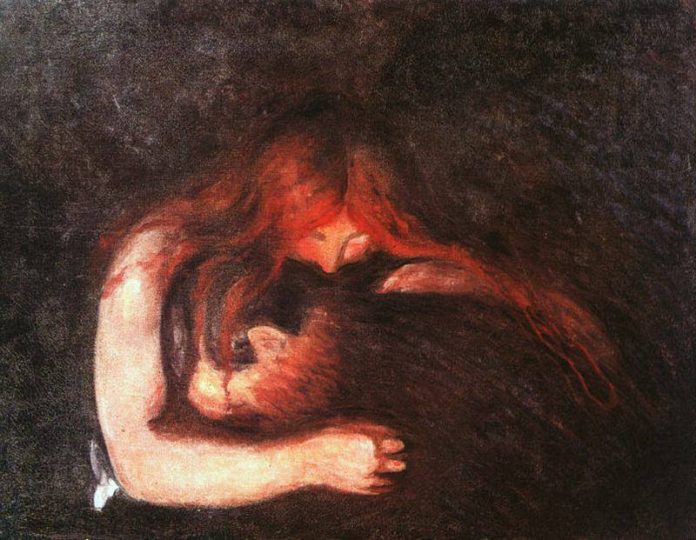Freud considered psychoanalysis to be “first and foremost an art of interpreting” (Freud, 1961a, p. 12). In this paper, our aim is to apply this art of interpreting to Fitzgerald’s The Great Gatsby in order to gain new insights into the novel.
Gatsby is torn apart by the tension between the present and the past: in his own words, he lived his life in a certain way in order to forget something sad that had happened to him long ago (Fitzgerald, 1992, p. 70). But, strangely enough, his actions in the novel tells us quite the opposite: he wants to stay in the past. For him, the past is both the source of great pleasure and great unpleasure. How are we to reconcile Gatsby’s contradictory attitudes towards the past?
Freud believed that we generally aim to reduce psychic tension by either keeping the quantity of excitation we experience “as low as possible or at least to keep it constant (Freud, 1961a, p. 3)”. Freud calls this mechanism the “pleasure principle.” If the quantity of excitation increases, the excitation will be felt as unpleasure. According to the pleasure principle, we avoid unpleasure in favour of pleasure. So far, there is nothing counterintuitive in what has been said; however, the relation between pleasure and unpleasure becomes complicated (and a bit counter-intuitive) when we take Freud’s idea of the death instinct [Todestrieb] into consideration:
“It seems, then, that an instinct is an urge inherent in organic life to restore an earlier state of things” (Freud, 1961a, p. 30).
By taking the death instinct into consideration, we might claim that Gatsby is exhibiting masochistic behaviour. He is, in a sense, destroying himself by obsessing over the past. In fact, this ultimately does (indirectly) lead to his demise and death. But maybe we should not take things so simply. Gatsby’s obsession with the past needs a deeper analysis.
By observing Gatsby’s inability to let go of the past, we should realise that he has undergone a traumatic experience, and it is this experience which he is trying to repress. There is an unfortunate cliché that during psychoanalytic sessions, the patient lies on a couch and reconstructs his past by retelling what they remember to their analyst. This method presupposes that the patient is able to remember everything including those memories which they have repressed. Although that is how psychoanalysis was born, Freud himself soon realised the limitations of this method (Freud, 1958, p. 141).
The mature Freud rightly understood that he should use other methods to find out what had been suppressed in his patients. Following this thread, Freud eventually realised that the patient
“is obliged to repeat the repressed material as a contemporary experience instead of, as the physician would prefer to see, remembering it as something belonging to the past” (Freud, 1961a, p. 12).
To put it differently, the patient’s constant repetition of an action signals to the analyst that there is something repressed in the patient that is presenting itself as repetition.
Following Freud, we cannot rely on Gatsby’s account of his past: what he tells us are either lies and distorted facts, or an idealised version of reality. The former refers to what Gatsby tells us about himself, and the latter refers to how he saw his past with Daisey. Therefore, just like Freud, we need to rely on the symptoms which Gatsby exhibits by his acts of repetition.
The drive to repeat consumes Gatsby. Take the following dialogue as an example:
“‘You can’t repeat the past.’
‘Can’t repeat the past?’ he cried incredulously. ‘Why of course you can!’
He looked around him wildly, as if the past were lurking here in the shadow of his house, just out of reach of his hand.
‘I’m going to fix everything just the way it was before,’ he said, nodding determinedly. ‘She’ll see.’
He talked a lot about the past, and I gathered that he wanted to recover something, some idea of himself perhaps, that had gone into loving Daisy. His life had been confused and disordered since then, but if he could once return to a certain starting place and go over it all slowly, he could find out what that thing was . . .” (Fitzgerald, 1992, pp. 116-117).
But Gatsby fails to repeat the past. So, what does he do instead? If we were asked, “What is it that Gatsby actually keeps repeating?” the obvious answer would be: He throws lavish parties. These parties are what Gatsby is known for; consequently, if we want to investigate Gatsby’s psyche, we need to understand why he keeps organising such parties. There are various answers to this question: for instance, we could answer that Gatsby is ashamed of his humble past, and now he is trying to compensate for it by showing off. But whatever reason we come up with, that reason is only a secondary cause; there is one ultimate cause because of which Gatsby organises his wild parties: Daisey. His encounter with Daisey (and their subsequent break-up) is the traumatic event which Gatsby cannot get over.
Every little thing in Gatsby’s life is an object meant for someone else: even his car is meant to be seen by everyone:
“He saw me looking with admiration at his car.
‚It’s pretty isn’t it, old sport?‘ He jumped off to give me a better view. ‚Haven’t you ever seen it before?‘
I’d seen it. Everybody had seen it” (Fitzgerald, 1992, p. 68).
But this “everybody” who Gatsby wants to impress is ultimately Daisey, and once Gatsby and Daisey are together this becomes completely clear:
“He hadn’t once ceased looking at Daisy, and I think he revalued everything in his house according to the measure of response it. Drew from her well-loved eyes. Sometimes, too, he stared around at his possessions in a dazed way as though in her actual and astounding presence none of it was any longer real” (Fitzgerald, 1992, pp. 96-97).
In the above passage we see that everything that Gatsby owned was really meant for one person: Daisey.
It is noteworthy that despite appearances, Gatsby is far from a happy person. Every act of repetition is a revisit to the painful past. We mentioned earlier that there is a complicated relation between pleasure and unpleasure; the complication arises because although the act of repetition (by virtue of releasing psychic tension) might be experienced as something pleasurable, “the greater part of what is re-experienced under the compulsion to repeat must cause the ego unpleasure” (Freud, 1961a, p. 14).
We could ask, Why wasn’t Gatsby able to get over his break-up with Daisey? What was it that made this experience so traumatic? We can consider the loss of love as a traumatic event by giving two different Freudian answers: Firstly, Freud points out that in civilisation, we use certain mechanisms to cope with civilisation and its discontents. There is something which is, strangely, both the answer to our uneasiness in civilisation and the cause of our sufferings: “our relations to other men” (Freud, 1961b, p. 26). This relation finds its most radical form in love. Even though love can save us, it can be a great danger when we are faced with the loss of the beloved. As Freud poetically puts it:
“we are never so defenceless against suffering as when we love, never so helplessly unhappy as when we have lost our loved object or its love” (Freud, 1961b, p. 33).
In this sense, Gatsby’s reaction is quite understandable; nevertheless, there is a second reason which is more specific to Gatsby as an individual: Gatsby is a character with many narcissistic tendencies: he is proud of himself and boasts of being a self-made man. Even prior to becoming a wealthy person, he had exhibited narcissistic tendencies. Gatsby is a person with an inextinguishable drive: indeed, if he did not have such a drive, he could never have become so successful in life. Viewing oneself as someone who can get things done is one of the hallmarks of a narcissist. For a narcissist, there cannot be any failures, yet there is one great failure in Gatsby’s life, and that is his relation with Daisey. As we are told by Freud, the loss of love leaves “a permanent injury to self-regard in the form of a narcissistic scar” (Freud, 1961a, p. 14). And this is precisely why Gatsby experienced the failure of his relationship with Daisey as a trauma.
Gatsby deeply wished to be with Daisey, but his belief that this was possible was ultimately nothing but an illusion—an illusion which he deeply wished to be reality.
“We call a belief an illusion when a wish-fulfilment is a prominent factor in its motivation” (Freud, 1962, p. 28).
What Gatsby had created for himself was nothing more than an idealised past as a deadly mirage. The final line of the novel is overtly Freudian:
“So we beat on, boats against the current, borne back ceaselessly into the past” (Fitzgerald, 1992, p. 189).
We cannot escape our past: our traumas will always haunt us.
References
- Fitzgerald, S. (1992). The Great Gatsby. Macmillan Publishing Companty.
- Freud, S. (1958). The Standard Edition of the Complete Psychological Works of Sigmund Freud, Volume XII. Hogarth Press.
- Freud, S. (1961a). Beyond the Pleasure Principle. W. W. Norton & Company, Inc.
- Freud, S. (1961b). Civilization and Its Discontents. W. W. Norton & Company, Inc.
- Freud, S. (1962). The Future of an Illusion. The Hogarth Press.




